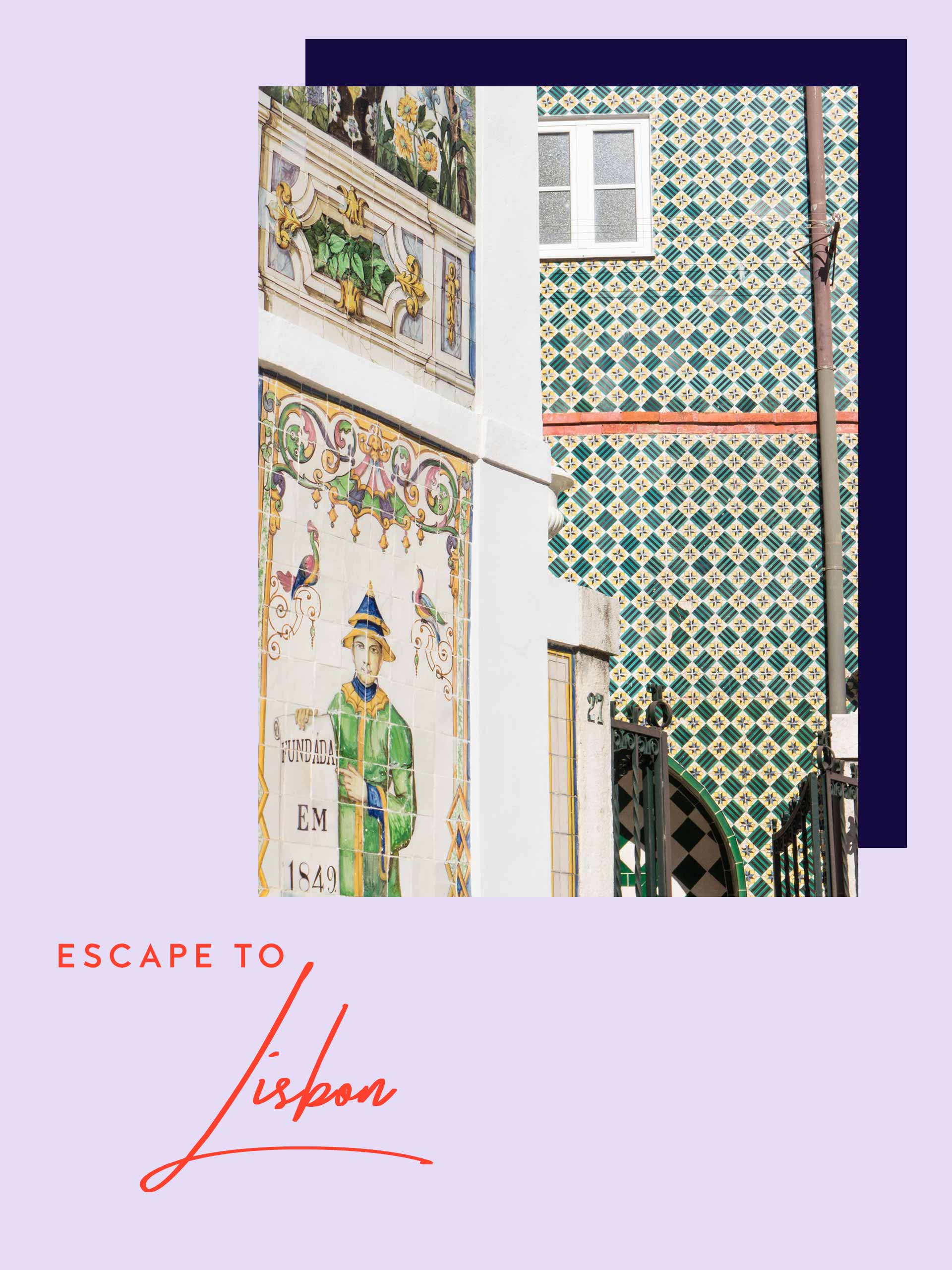A Guide To Lisbon
Images: What If We Walked / Ricardo Junqueira
The Hidden Hotels
Casa Fortunato: The seductive fusion of a small design hotel and a stylish townhouse best describes what the luxury nine-suite Casa Fortunato in Lisbon’s fashionable Amoreiras quarters is all about. Stepping through the heavy-set doors of this 100-year old Pombaline-style building there is an apparent heritage heirloom nostalgia, paired with a playful, imaginative design narrative. Geometrics juxtapose sorbet florals, reflective metals offset hand-tufted carpets. There is something innately happy about the Casa Fortunato, it possesses a lovable alchemy of style, design and rooted heritage.
Book Now
Palacio Belmonte: Situated in Alfama, the oldest part of the city, which rises above Lisbon and is dominated by St. George’s Castle. The area is a warren of narrow Moorish streets, with fountain-filled courtyards and the sound of fado in the evenings. Palacio Belmonte lies right up against the castle walls, just a five-minute walk from the castle itself. The architectural style of the palace spans many centuries and is brimming with character. Both ancient Roman and Moorish towers were incorporated into its design and a Baroque façade was added in 1640. Over 3,800 blue-and-white hand-painted tiles were commissioned in 1720 and fill many of the rooms. The present owner spent six years and many millions restoring the building, filling it with antiques and interweaving them with modern art.
Book Now
Casa Fortunato
Palacio Belmonte
Where to Eat
Gambrinus: A Michelin-recommended restaurant that's a go-to for locals, far from 'touristy'. Gambrinus is synonymous with ocean cuisine and while there are meat dishes on the menu (particularly game) it's the peixes e mariscos (fish and seafood) that continues to reel in an appreciative clientele. The kitchen prides itself on cooking to perfection a range of traditional Portuguese seafood dishes such as grilled sea bream or sea bass. The chefs also add a dash of Gallic magic to produce signature dishes such as turbot court bouillon and a delicious seafood bisque starter. And for a real splurge how about a starter of Iranian beluga caviar?
Gremio Literario: THE GRÉMIO LITERÁRIO was created in 1846 by royal charter of Queen D. Maria II, thus giving her support to the initiative of a prestigious group of writers, politicians and aristocrats of the Portuguese liberal world. Thirty years later the Grémio settled in its present facilities, the Loures Palace, in the Chiado quarter, the elegant centre of the intellectual and social Lisbon society, a characteristic building in the local romantic architectural style. With decorated rooms, a rich library, precious garden overlooking the river Tagus and the Moorish castle. Besides the culture, Grémio Literário's restaurant has devoted itself to offering guests fine traditional cuisine.
What to See
Palacio Fronteria: The palace is the private residence of the Marquesses of Fronteira. It is located in a very quiet area, near the Monsanto Forest Park. The house and the garden have glazed tiles representing different themes such as battles or monkeys playing trumpets. The chapel, dating from the end of the 16th century, is the oldest part of the palace. The façade is adorned with stones, shells, broken glass and porcelains. In spite of being the current residence of the Marquis of Fronteira some of the rooms, the library and the garden are open for guided visits.
Fundação Calouste Gulbenkian: Regarded as one of the best museums in Portugal, the Gulbenkian Museum can take you from Ancient Egypt to the present day across its two collections. The Founder’s Collection and the Modern Collection each has their own specific presentation, but they also speak to each other in temporary exhibitions and projects. Must see – Rene Lalique collection.
Gremio Literario
Palacio Fronteira
Where to Shop
Livraria Betrand: The Bertrand Chiado was recognized in 2011 by the Guinness Book as the oldest bookstore in the world still in operation. Having opened its doors in 1732, this store located at Rua Garrett in Chiado has several rooms and a few spots so the visitors can sit and read. By having a long operating time, the bookstore witnessed several important moments of the recent history of Portugal, and has had the privilege to receive important visitors. This place is mandatory for anyone who passes by Chiado!
Claus Porto: At the roots of Claus Porto are its German founders and a beautiful, historic Portuguese city. The marriage of these two European identities went on to create a venerable beauty and fragrance house, which marked its 130th anniversary in 2017. The label built its name on hand-crafted soaps infused with fine fragrances, which draw on ingredients from Portugal’s lush countryside. These products are imbued with an artisan’s heart and soul, and are wrapped by hand in packaging illustrated with beautiful art work. Every product shines with the influence of the house’s vintage graphic designs, which give a sense of being transported to the glamourous decadence of Belle Époque Europe.
Leret Leret: Specialising solely in the cashmere sweater. Leret Leret is designed in New York and meticulously crafted in Mongolia, each piece comes to life as a fine cashmere treasure and a timeless wardrobe staple. Their pop-up in Rua Sto Amaro is definitely worth a visit.
Claus Porto Perfumerie
